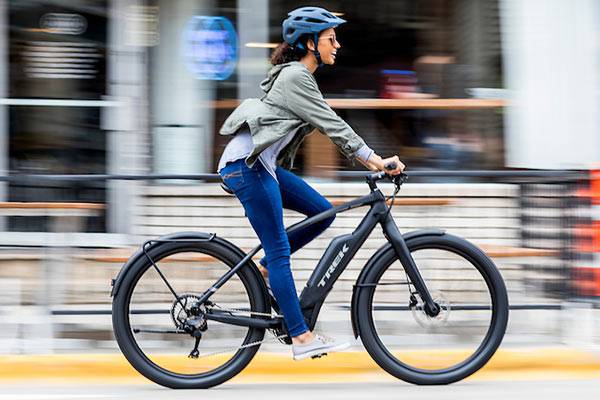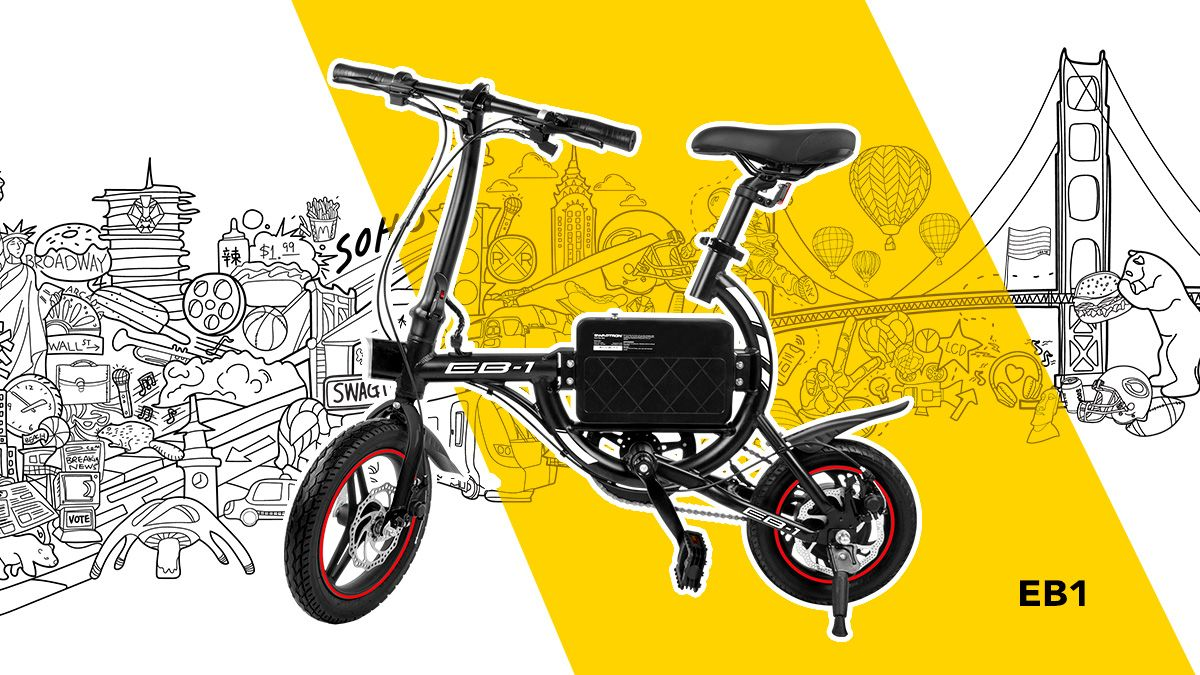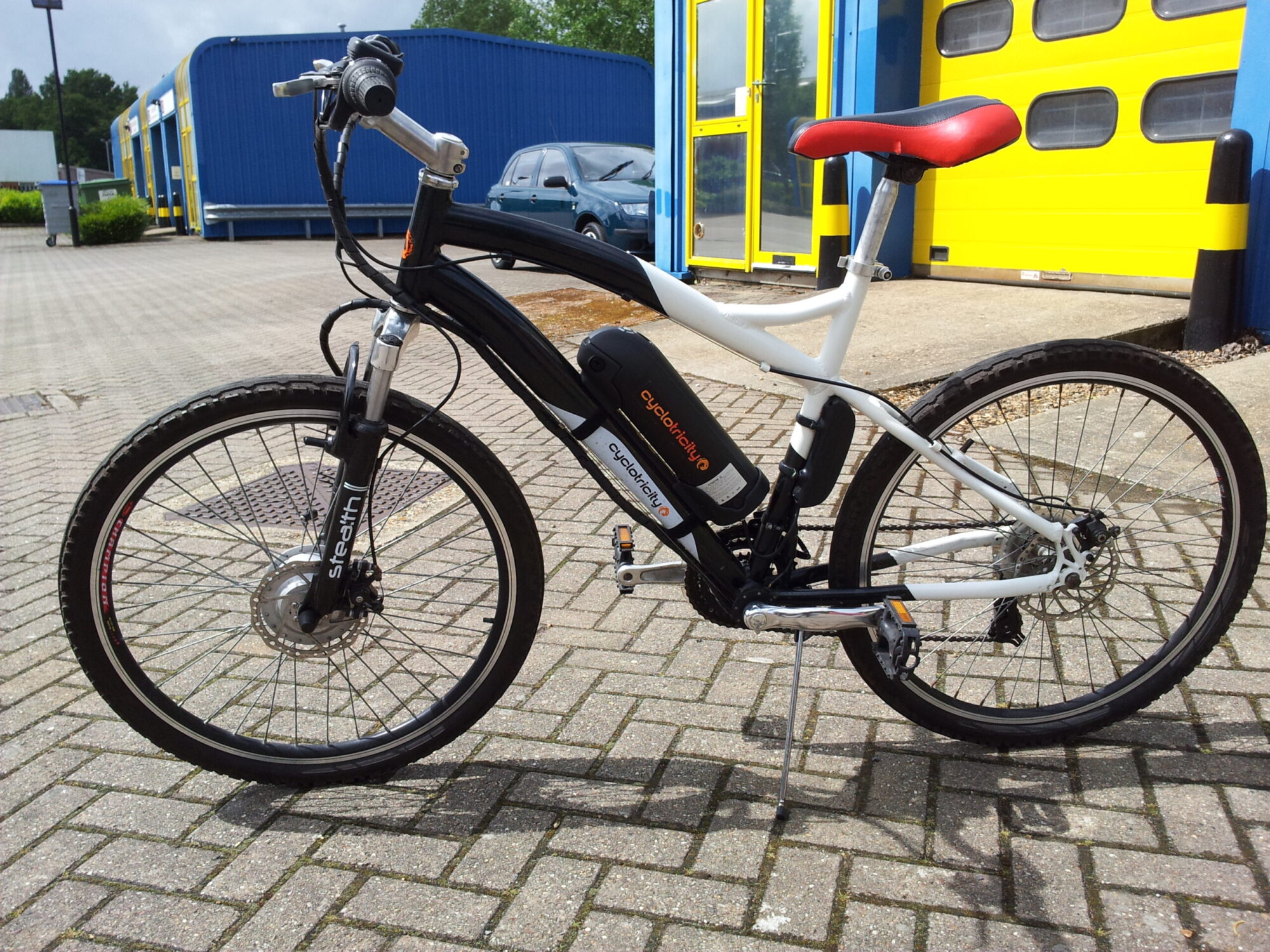Table of Contents
ToggleHow Much Does an Electric Bike Cost: Unveiling the Truth
An electric bike typically costs between $500 and $5,000. Prices vary based on features, brand, and build quality.
Electric bikes, or e-bikes, are gaining popularity for their convenience and eco-friendliness. They offer an efficient way to commute, exercise, and explore without the effort of traditional cycling. E-bikes come in various styles, including mountain, road, and folding models, catering to different needs and preferences.
Factors influencing the cost include battery life, motor power, frame material, and additional features like suspension and integrated lighting. Investing in an e-bike can provide long-term savings on transportation and contribute to a healthier lifestyle. Whether for daily commuting or weekend adventures, there’s an e-bike to fit various budgets and requirements.

Credit: www.mhw-bike.com
The Cost Of Electric Bikes
Electric bikes, often called e-bikes, have grown in popularity. They offer a fun and eco-friendly way to travel. But how much does an electric bike cost? The cost of electric bikes can vary widely based on several factors. Let’s explore these factors and see the average price range of e-bikes.
Factors Affecting Electric Bike Cost
Several factors can influence the cost of an electric bike. Here are some of the key elements that can affect the price:
- Battery: The battery is one of the most expensive components. Larger batteries with longer ranges cost more.
- Motor: The power and quality of the motor also play a significant role. Mid-drive motors are usually more expensive than hub motors.
- Frame Material: E-bikes made with lightweight materials like carbon fiber or aluminum cost more than steel frames.
- Brand: Established brands tend to charge more due to their reputation and quality assurance.
- Features: Extra features like suspension, advanced displays, and higher-quality brakes add to the cost.
- Accessories: Add-ons like fenders, racks, and lights can increase the overall price.
Here is a table summarizing some of these factors:
| Factor | Effect on Price |
|---|---|
| Battery | Higher capacity increases cost |
| Motor | More powerful motors cost more |
| Frame Material | Lighter materials increase cost |
| Brand | Reputable brands charge more |
| Features | Advanced features add to price |
| Accessories | Additional accessories increase cost |
Average Price Range
The price of electric bikes can vary widely. Here is a breakdown of the average price range for different types of e-bikes:
- Entry-Level E-Bikes: These bikes typically cost between $500 and $1,000. They are great for casual riders and short commutes.
- Mid-Range E-Bikes: Prices for these bikes range from $1,000 to $3,000. They offer better components and longer battery life.
- High-End E-Bikes: These can cost anywhere from $3,000 to $8,000 or more. They feature top-of-the-line components and advanced technology.
Here is a table summarizing the average price ranges:
| Type of E-Bike | Price Range |
|---|---|
| Entry-Level | $500 – $1,000 |
| Mid-Range | $1,000 – $3,000 |
| High-End | $3,000 – $8,000+ |
Choosing the right e-bike depends on your budget and needs. If you want a basic model for short trips, entry-level e-bikes are a good choice. For longer commutes and more features, mid-range bikes are ideal. High-end e-bikes offer the best performance and features for avid cyclists.
Quality And Features
Electric bikes, also known as e-bikes, offer an eco-friendly and efficient way to travel. The cost of an electric bike varies widely based on several factors. Among these, the quality and features of the bike play a significant role in determining the price. Understanding these elements can help you make an informed decision when purchasing an e-bike.
Impact On Price
The quality and features of an electric bike greatly impact its price. Higher quality materials and advanced technologies can drive up the cost. Here are some factors that influence the price:
- Frame Material: E-bikes with lightweight and durable materials like carbon fiber or aluminum tend to be more expensive than those with steel frames.
- Battery Capacity: Larger battery capacities offer longer riding ranges but also increase the price. A high-capacity battery can cost significantly more.
- Motor Power: The power of the motor, measured in watts, affects both the bike’s performance and price. More powerful motors offer better performance but come at a higher cost.
- Brand Reputation: Well-known brands often charge a premium for their products due to their reputation for quality and reliability.
Here’s a table that breaks down the approximate costs based on these factors:
| Feature | Impact on Price |
|---|---|
| Frame Material | $300 – $800 |
| Battery Capacity | $200 – $600 |
| Motor Power | $100 – $500 |
| Brand Reputation | $100 – $400 |
Essential Features
When choosing an electric bike, certain features are essential for a good riding experience. These features not only enhance performance but also ensure safety and comfort:
- Battery Life: A good e-bike should have a battery that lasts at least 20 miles on a single charge. Look for batteries that are easy to replace and charge.
- Motor Type: Hub motors are common and more affordable, while mid-drive motors offer better balance and performance but are pricier.
- Brakes: Disc brakes provide better stopping power and are more reliable than traditional rim brakes, especially in wet conditions.
- Suspension: Front or full suspension systems absorb shocks and provide a smoother ride, which is crucial for rough terrains.
- Weight: Lightweight e-bikes are easier to handle and transport. Opt for bikes made of materials like aluminum or carbon fiber.
Here’s a summary of essential features and their impact on the overall cost:
| Feature | Importance |
|---|---|
| Battery Life | High |
| Motor Type | Medium |
| Brakes | High |
| Suspension | Medium |
| Weight | Low |
These essential features ensure your e-bike is not only cost-effective but also reliable and enjoyable to ride.
Brand Influence
Electric bikes have become a popular choice for commuters, recreational riders, and eco-conscious individuals. The cost of an electric bike can vary greatly, and one significant factor is the brand. Brand influence plays a crucial role in determining the price of an electric bike. Recognized brands often command higher prices, but they also promise quality, durability, and advanced features.
Popular Brands And Pricing
Several brands dominate the electric bike market, each offering unique features and varying price points. Let’s explore some popular brands and their pricing:
- Rad Power Bikes: Known for their affordability and robust build. Prices range from $1,000 to $2,000.
- Trek: A premium brand offering high-quality bikes. Prices start at $2,000 and can go up to $10,000.
- Specialized: Offers a wide range of electric bikes. Prices vary from $2,500 to $12,000.
- Giant: Known for reliable and durable bikes. Pricing ranges from $1,500 to $5,000.
- Ancheer: A budget-friendly brand with prices ranging from $600 to $1,500.
Here’s a quick comparison table for better clarity:
| Brand | Price Range |
|---|---|
| Rad Power Bikes | $1,000 – $2,000 |
| Trek | $2,000 – $10,000 |
| Specialized | $2,500 – $12,000 |
| Giant | $1,500 – $5,000 |
| Ancheer | $600 – $1,500 |
Value For Money
When buying an electric bike, consider the value for money. A higher price doesn’t always mean better quality. It’s essential to assess the features, warranty, and customer reviews.
Rad Power Bikes offer excellent value for budget-conscious buyers. They provide sturdy builds, decent battery life, and good customer service. Users find them reliable for daily commutes.
Trek and Specialized bikes are pricier but come with advanced features like better suspension, higher battery capacity, and more efficient motors. These bikes are ideal for enthusiasts who seek top-notch performance.
Giant strikes a balance between affordability and quality. They offer reliable bikes with good features, making them a popular choice for many riders.
Ancheer is perfect for those on a tight budget. These bikes may lack some advanced features but are sufficient for casual riding and short commutes.
To ensure you get the best value, compare the features and prices. Read customer reviews and, if possible, test ride the bikes. This helps you make an informed decision and choose a bike that fits your needs and budget.
Customization And Upgrades
Electric bikes are popular for their convenience and eco-friendliness. The cost of an electric bike can vary greatly. One key factor affecting the price is customization and upgrades. Customizing your e-bike and adding upgrades can enhance your riding experience. This section dives into the customization options and the costs associated with these upgrades.
Customization Options
Customization allows riders to personalize their e-bike for their needs. Here are some common customization options:
- Battery Upgrades: Choosing a higher-capacity battery can increase the distance you can travel.
- Motor Power: Opt for a more powerful motor for better speed and performance.
- Frame Material: Select a lightweight frame for easier handling, or a sturdy frame for rough terrains.
- Seat and Handlebar Adjustments: Customize the seat and handlebar for a more comfortable ride.
- Tire Choices: Choose tires based on your riding terrain, such as off-road or city streets.
These customization options can make a significant difference in your riding experience. For instance, a high-capacity battery ensures you don’t run out of charge during long rides. A powerful motor can help you tackle steep hills with ease.
Cost Of Upgrades
The cost of upgrades can vary based on the type and quality of parts. Here’s a breakdown of some common upgrades and their costs:
| Upgrade | Cost Range |
|---|---|
| Battery Upgrade | $200 – $800 |
| Motor Upgrade | $300 – $1000 |
| Frame Material | $150 – $500 |
| Seat Adjustment | $50 – $200 |
| Tire Choices | $30 – $150 |
Battery upgrades are one of the most expensive, but they can greatly extend your riding range. Motor upgrades can improve your bike’s speed and climbing ability. Changing the frame material can make your bike lighter and easier to handle. Adjusting the seat and handlebars is less costly but can significantly improve comfort. Tire choices depend on the terrain you plan to ride on; off-road tires may cost more but provide better grip.
Customizing and upgrading your electric bike can enhance your riding experience. Consider your needs and budget when choosing upgrades.
Comparing Electric And Traditional Bikes
Electric bikes, commonly known as e-bikes, have gained significant popularity in recent years. Many people wonder how much an electric bike costs compared to a traditional bike. The price difference can be substantial, but so are the benefits. Let’s dive into a detailed comparison between electric and traditional bikes.
Cost Analysis
When buying a bike, the initial cost is an important factor. Here’s a brief comparison:
| Type of Bike | Average Cost |
|---|---|
| Traditional Bike | $300 – $1,000 |
| Electric Bike | $1,000 – $5,000 |
Traditional bikes are usually cheaper. You can get a decent one for around $300. High-end models may cost up to $1,000.
Electric bikes are pricier. Basic models start at $1,000. Premium versions can cost up to $5,000. Features like battery life, motor power, and brand influence the price.
Here are some factors that affect the cost of an e-bike:
- Battery Capacity: Larger batteries cost more.
- Motor Power: More powerful motors are pricier.
- Additional Features: Features like GPS, advanced brakes, and suspension add to the cost.
Long-term Savings
Electric bikes offer long-term savings despite the higher initial cost. Here’s how:
Fuel Savings: E-bikes run on electricity, not gas. Charging an e-bike costs much less than fueling a car.
Maintenance Costs: E-bikes require less maintenance. Fewer parts can break compared to traditional bikes and cars. Electric motors and batteries are more durable.
Public Transport Savings: With an e-bike, you may spend less on public transport. This can save you hundreds of dollars annually.
Health Benefits: Riding an e-bike improves your health. Healthier lifestyles can reduce medical bills over time.
Let’s look at a simple cost comparison over five years:
| Expense | Traditional Bike | Electric Bike |
|---|---|---|
| Initial Cost | $500 | $2,000 |
| Fuel/Charging Costs | $0 | $50 |
| Maintenance | $300 | $150 |
| Total (5 years) | $800 | $2,200 |
While the initial cost of an electric bike is higher, long-term savings make it a smart investment. You save on fuel, maintenance, and public transport.

Credit: swagtron.com
Additional Costs
When considering the cost of an electric bike, it’s important to look beyond the initial purchase price. Additional costs can add up over time and significantly impact your budget. These costs include maintenance and repairs, as well as accessories and gear that enhance your riding experience.
Maintenance And Repairs
Regular maintenance ensures your electric bike runs smoothly and lasts longer. Routine maintenance tasks include checking the battery, brakes, and tires. These tasks might seem minor, but they help prevent costly repairs.
Here are some typical maintenance costs:
- Battery replacement: $300 – $700, depending on the model.
- Brake pads: $20 – $50 per pair.
- Tire replacement: $30 – $60 per tire.
Occasionally, you might need more extensive repairs. These can include motor issues or electrical problems. Repair costs for such issues can range from $100 to $500. Regular check-ups by a professional can catch problems early and keep costs down.
Consider creating a maintenance schedule:
| Task | Frequency |
|---|---|
| Battery Check | Monthly |
| Brake Inspection | Every 3 months |
| Tire Check | Every 6 months |
Accessories And Gear
Accessories and gear enhance your safety and comfort while riding. Some items are essential, while others improve your biking experience.
Essential accessories include:
- Helmet: $50 – $200
- Lights: $30 – $100 for front and rear lights
- Lock: $20 – $100
Optional gear can also add to the cost:
- Pannier bags: $40 – $150
- Phone mount: $15 – $50
- GPS tracker: $50 – $150
Investing in good quality gear can make a big difference. For instance, a high-quality helmet provides better protection. Bright lights improve visibility, especially when riding at night. A sturdy lock ensures your bike stays safe from theft.
Here’s a quick overview of costs:
| Item | Cost Range |
|---|---|
| Helmet | $50 – $200 |
| Lights | $30 – $100 |
| Lock | $20 – $100 |
By planning for these additional costs, you can enjoy a safer and more enjoyable ride on your electric bike.
Financial Incentives
Electric bikes have surged in popularity due to their convenience and eco-friendliness. But how much does an electric bike cost? Financial incentives can significantly reduce the price you pay. Understanding these incentives can make e-bikes more affordable and accessible.
Government Subsidies
Government subsidies play a crucial role in lowering the cost of electric bikes. Various countries and states offer different types of subsidies to encourage the use of electric vehicles.
Here are some examples:
- France: Offers up to €200 subsidy for purchasing an electric bike.
- Germany: Provides up to €500 for e-bike purchases.
- California: Offers rebates up to $1,000 for low-income residents.
These subsidies can cover a significant portion of the cost, making e-bikes more affordable. For instance, if an e-bike costs $2,000, a $500 subsidy can bring the price down to $1,500.
Below is a table showing subsidy details:
| Country/State | Subsidy Amount |
|---|---|
| France | €200 |
| Germany | €500 |
| California | $1,000 |
Knowing about these government subsidies can help you budget better and decide which e-bike to buy. Always check local regulations for the most current information.
Tax Benefits
Tax benefits can also make electric bikes more affordable. Some regions offer tax credits or deductions for purchasing e-bikes.
Here are some tax incentives available in different areas:
- USA: Offers a federal tax credit of up to 30% for e-bike purchases, capped at $1,500.
- Canada: Some provinces provide tax rebates for e-bike purchases.
- UK: Allows e-bike purchases through the Cycle to Work scheme, offering tax savings.
For example, if an e-bike costs $2,000 and you get a 30% tax credit, you save $600. This reduces the effective cost to $1,400.
Below is a list of potential savings:
- USA: Up to $1,500 in tax credits.
- Canada: Provincial tax rebates vary.
- UK: Tax savings through salary sacrifice schemes.
These tax benefits can considerably lower the overall cost. It’s essential to consult a tax advisor to understand how these benefits apply to you.
By utilizing both government subsidies and tax benefits, you can make your electric bike purchase more economical and environmentally friendly.

Credit: swagtron.com
Frequently Asked Questions
How Much Does A Basic Electric Bike Cost?
A basic electric bike typically costs between $600 and $1,000. The price varies based on the brand and features.
What Factors Influence Electric Bike Pricing?
Electric bike pricing depends on motor power, battery capacity, brand, and additional features like suspension or integrated lights.
Are Electric Bikes More Expensive Than Regular Bikes?
Yes, electric bikes are generally more expensive due to the added cost of the motor and battery.
Can I Find A Good Electric Bike Under $1,000?
Yes, you can find reliable electric bikes under $1,000. However, they might have fewer features.
Conclusion
Electric bike costs vary based on features and quality. Investing in one offers long-term savings and environmental benefits. Research different brands and models to find the best fit for your needs. Remember, a higher upfront cost often means better performance and durability.
Choose wisely and enjoy the many advantages of electric biking.

